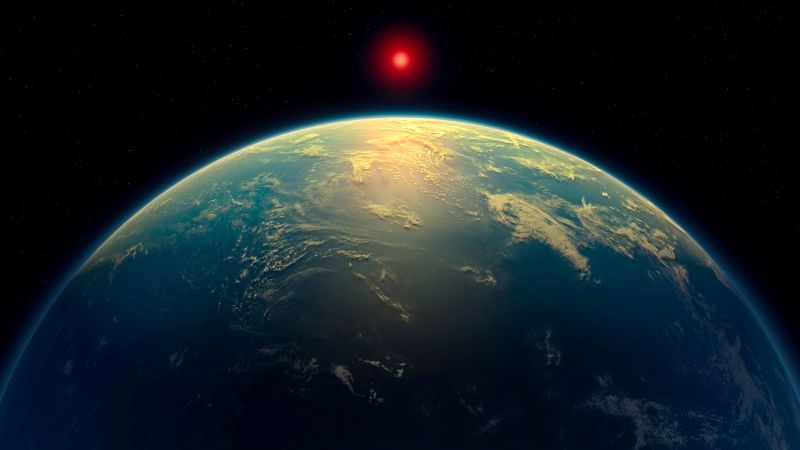The quest for life beyond Earth has captivated humanity for centuries, prompting scientists and astronomers to explore the cosmos in search of potential evidence. As researchers continue to probe the depths of space, a significant question emerges: what signs of life are they actually hunting for? This inquiry drives a wide array of investigations, from the analysis of microfossils embedded in ancient Martian rocks to the possibility of finding life on exoplanets resembling Earth, often referred to as Planet B.
Among the most compelling avenues of exploration is the concept of technosignatures—signals that could be produced by intelligent life forms. The scientific community has been engrossed in debates regarding not only what life might look like on other planets but also where best to search for it. Recently, scholars reported a groundbreaking finding involving an intriguing exoplanet that may illuminate the possibilities of life beyond our own world.
The recent study employed the advanced capabilities of the James Webb Space Telescope to detect chemical fingerprints in the atmosphere of a distant celestial body known as K2-18b. Located approximately 124 light-years from Earth, this planet shows signs of molecules that are typically associated with biological processes on our planet, specifically dimethyl sulfide and potentially dimethyl disulfide. The former of these chemicals is predominantly produced by marine phytoplankton, hinting at the potential of life-sustaining conditions on K2-18b.
Nikke Madhusudhan, a professor specializing in astrophysics and exoplanetary science at the University of Cambridge, proposed that K2-18b is categorized as a “Hycean world.” This term describes a massive planet entirely enveloped in liquid water with a hydrogen-rich atmosphere, ideal conditions for sustaining life as we understand it. While Madhusudhan and his team find the prospect of a teeming ocean filled with life plausible based on the existing data, the team stops short of claiming outright discovery of extraterrestrial life, noting the need for further validations amid skepticism from fellow scientists regarding the biological activity represented by these molecules.
In parallel scientific pursuits, ocean expeditions are also shedding light on Earth’s mysteries. A recent exploration has unveiled the first-ever footage of a colossal squid, an organism that recalls a “glass sculpture,” in its native deep-sea habitat. This innovative discovery highlights the vibrant ecosystems thriving in the ocean’s depths and raises questions about undiscovered marine species.
On another front, the subject of space travel has garnered attention with significant voyages undertaken by high-profile individuals, including singer Katy Perry and journalist Gayle King, aboard a Blue Origin New Shepard flight. This mission, which lasted roughly 10 minutes and reached altitudes beyond the Kármán line, initiates discussions about the boundary separating Earth’s atmosphere from outer space. Notably, the Kármán line, set at 62 miles or 100 kilometers, has historically been a source of debate concerning where we draw the proverbial line distinguishing the earth from the cosmos.
In less explored regions of Earth, a notable geological phenomenon has been investigated by seismologist Deborah Kilb. Through her efforts, unusual tremors have been detected beneath the Sierra Nevada region, presenting a unique opportunity to observe the planet’s crust in a way that suggests peeling away. This finding could revolutionize how researchers comprehend the formation of continents and may reveal further regions where this geological activity is occurring.
Amidst these scientific developments, the discovery of a 4.6 billion-year-old meteorite has the potential to significantly alter our understanding of Earth’s origins and the historical presence of water on our planet. Additionally, excitement is stirred amongst amateur astronomers who recently observed C/2025 F2 (SWAN), a comet that has unfortunately disintegrated while approaching the sun. Despite its fragmentation, the remnants of the comet are anticipated to remain visible in the following weeks, offering yet another spectacle to skywatchers.
Moreover, NASA astronaut Don Pettit, celebrated for his contributions both to space travel and popular science photography, has returned from a seven-month mission aboard the International Space Station. As he rejoins life on Earth, he leaves behind a collection of stunning photographs that capture the beauty of our planet from above.
These remarkable developments in the fields of astronomy, marine biology, and geology are part of the broader story of humanity’s ongoing quest for knowledge. From the examination of distant worlds to the exploration of the deep seas, these discoveries reveal the intricacies of our universe and the significance of preserving our own planet’s diverse environments. Interested readers can explore more on these topics in the next edition of “Wonder Theory,” presented by CNN’s team of science writers.












